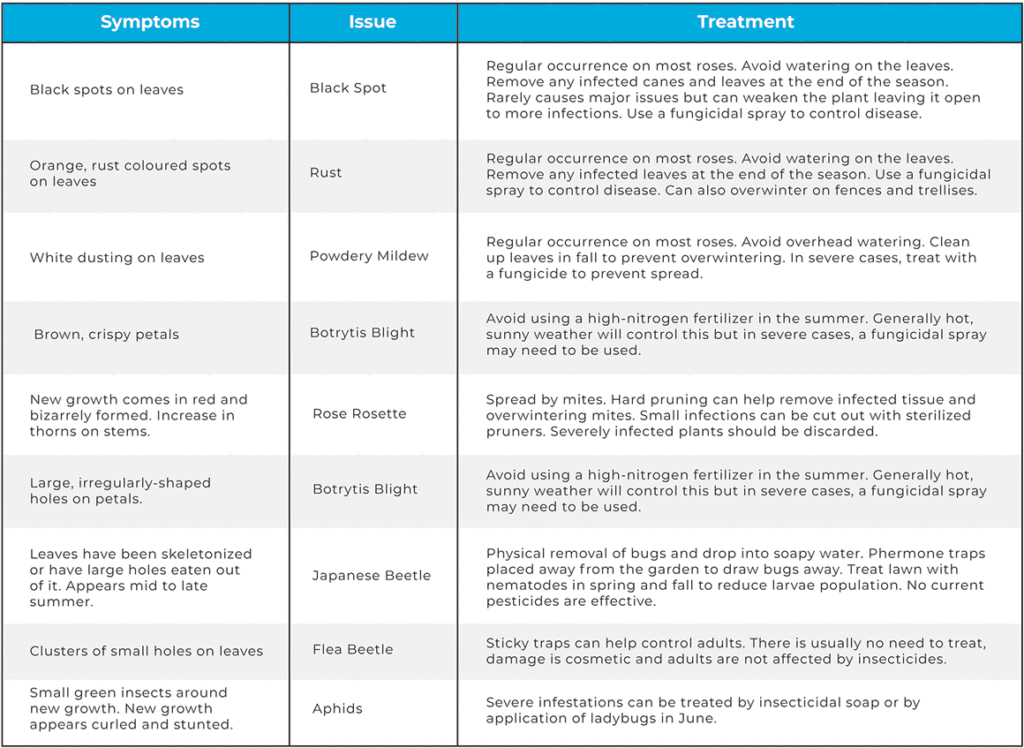MAINTAINING YOUR ROSES
OVERWINTERING & COMMON PROBLEMS
To keep your new rose bush healthy, happy, and performing its best, there are some easy maintenance tasks to complete throughout the year. Keeping an eye out regularly for pests and diseases will ensure they are caught and treated early, while proper overwintering will ensure your rose bush spends the cold season well protected from those harsh winter winds!
Overwintering
One of the biggest challenges that gardeners face with roses is correctly overwintering them. This process should begin much earlier than most people think: late summer or early fall! About 8 weeks before the first frost, you should stop fertilizing your roses as you don’t want to encourage any new growth that will not be hardened off before winter. As the temperature drops and the days shorten, reduce your watering frequency as well. It is best to leave all of the flowers on the plant and let them go to seed as this can help encourage dormancy in the plant. The ‘seeds’ (rose hips) can be left on the plant for animals to eat through winter (such as birds and squirrels) or they can be removed.
After the first heavy frost, complete your fall pruning (as mentioned in Maintaining Your Roses: Pruning), and once the ground begins to freeze (typically mid-late November), you can start to “hill-up” your roses. Using triple mix or a compost with a strong bark component (Biofor), make a hill of your chosen material around your rose that covers the center of your plant. Using a rose collar is recommended as it reduces the amount of material needed, ensures your hill does not shift if we have a warm spell, and generally makes your hill easier to form. To install, simply secure your rose collar around the base of the plant and fill with your hilling material. If you opt not to use a collar, you can also mulch around the base of the plant and over your newly made hill using wood chips, straw or evergreen boughs for added security.
Common Pests and Diseases





